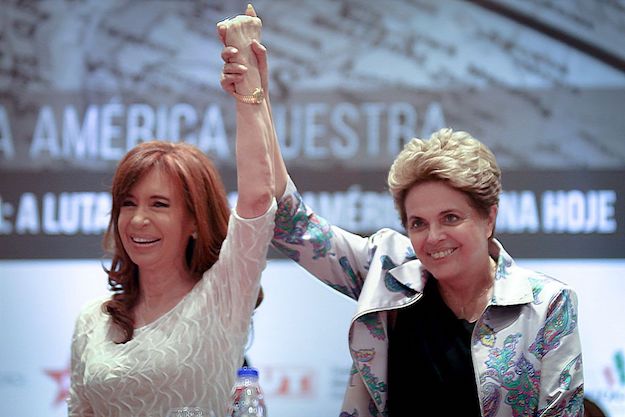This article is adapted from Americas Quarterly’s print issue on Venezuela after Maduro
Four years ago, Latin America boasted four female presidents. Today, there are none. AQ spoke to Jennifer Piscopo, a professor at Occidental College and an expert on gender and politics in Latin America, about what’s in store for 2018. This interview has been edited for clarity and length.
How have female candidates fared so far in 2018?
At the presidential level, there are some female contenders, but they’re not considered viable. At the legislative level, women’s success depends on whether countries have quotas on the percentage of candidates that must be women. In Costa Rica, where the quota is 50 percent, more women than ever won congressional seats in February’s election, increasing their representation from 33 to 46 percent. In Colombia, where the quota is 30 percent, representation in Congress remains low after March’s election, but didn’t decline. Looking ahead, in Mexico, where the quota is also 50 percent, I expect women’s representation in the lower house to remain at or increase from the current level of 42 percent. In Brazil, the quota works less well and there’s less enforcement.
With the rising conservatism in the region, are more right-wing female politicians coming to the fore?
This broader tide of conservatism has made parties and voters more reluctant to support women. They are looking for more traditional leadership models, which are often associated with men. Even women interested in contesting the presidency on the right, like Margarita Zavala, are finding pathways closed to them. All else being equal, the right and the left both have poor track records when it comes to nominating women.
Do you think this year’s two remaining female presidential candidates, Zavala in Mexico and Marina Silva in Brazil, can win?
I don’t have high hopes for Silva or Zavala. Silva is a perennial candidate. She is not as viable now as she was in previous elections, and part of that could be voter fatigue. It could also be that in Brazil, the turn to the right and the rejection of women as political leaders has been very stark, not just with the impeachment of Dilma Rousseff, but with Michel Temer’s initial all-male cabinet.
Your recent research found that when economies are bad, parties nominate more men than women as a sign of stability. Do you see this playing out currently?
This year we see a trend where voters are really concerned with the economy, and there also are no viable female contenders in any of the countries having elections. Research shows that female presidents are judged more harshly than male presidents, even when their economic performance is similar. Women presidents are seen as worse managers of the economy. If parties need to persuade voters that they can turn the economy around, then men have an advantage.
Who might be Latin America’s next female president?
Prospects are bleak because large numbers of women are not entering cabinet or attaining other pipeline positions. It’s also difficult to have one female president follow another. Even when voters say they would vote for another woman for the presidency, parties become reluctant to support those women.
For instance, in Costa Rica, when Laura Chinchilla stepped down, there was a well-placed Afro-Costa Rican woman on the left who wanted her party’s presidential nomination, Epsy Campbell Barr. She had good support in early public opinion polls with voters, but the party shied away from nominating her because Chinchilla’s performance was thought to be so disastrous. There was this reluctance from the party to take that risk on running another woman. Although we know that this reluctance was gendered, Chinchilla’s economic performance was no less disastrous than the previous male president’s. In fact, some analyses suggest it was better, but voters and party leaders still viewed it as disastrous.
For Chinchilla, Rousseff and Argentina’s Cristina Fernández de Kirchner, what helped them win was that they were the chosen candidates of incumbent parties that were very popular going into the election. That’s been the key factor.
Ed. Note: On April 1, after this interview took place, Epsy Campbell Barr became vice president-elect of Costa Rica when voters chose her running mate, Carlos Alvarado, as president.






